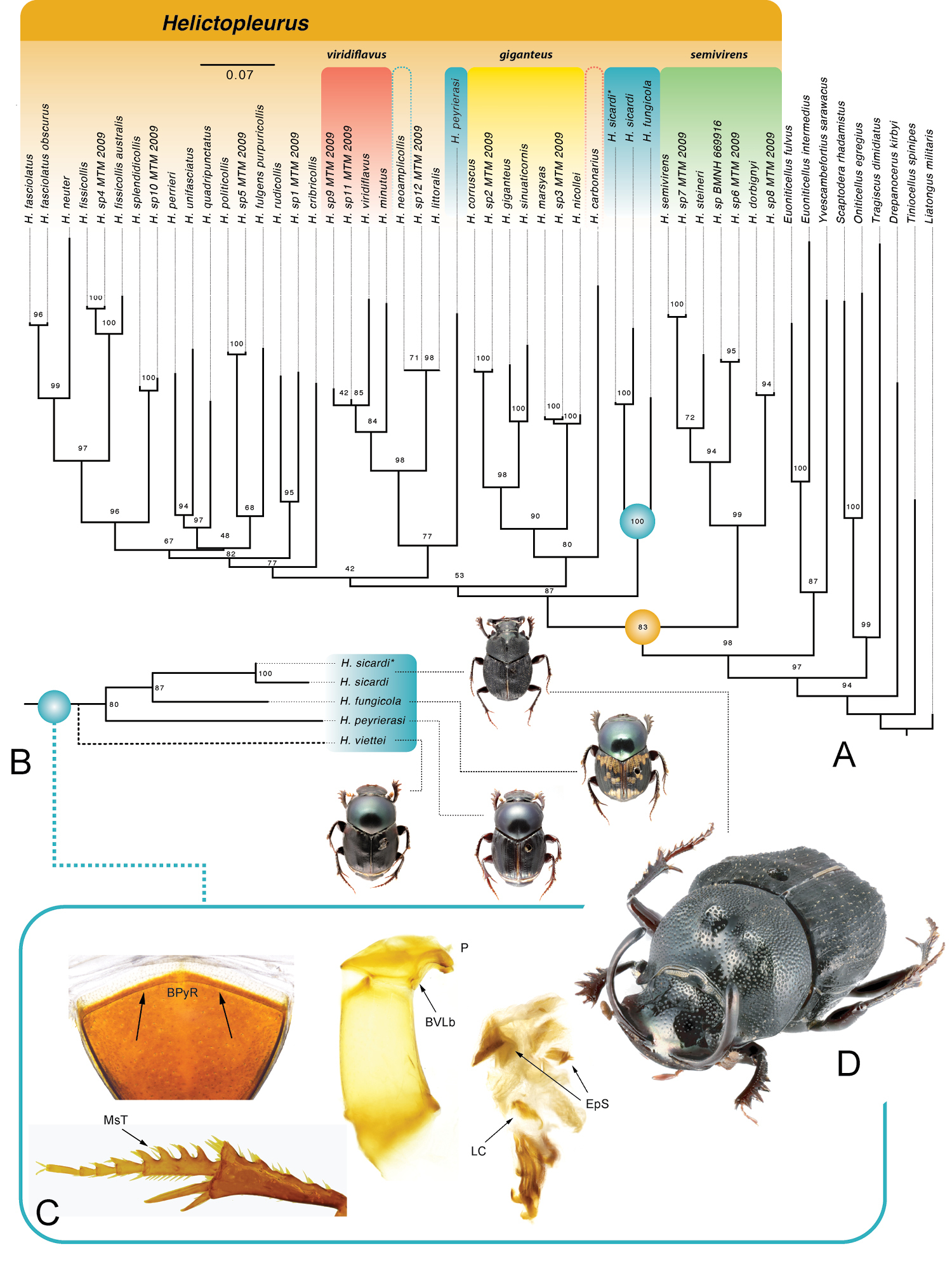
|
||
|
Molecular phylogenies and morphological synapomorphies of the fungicola species group A phylogenetic position of H. sicardi within Helictopleurus. Helictopleurus neoamplicollis and H. carbonarius are highlighted with colored dashed line to indicate their previous placement B COI-based phylogeny: magnification of the fungicola clade and phylogenetic position of H. peyrierasi stat. rest. C synapomorphies of the fungicola species group: basal pygidial ridge (BPyR); mesotarsal teeth (MsT) on the first tarsomere; parameres (P) elongated and evenly curved downward, basoventral lobes of the parameres bell shaped (BVLb); superior side of the membranous sac of the endophallus with spines (EpS); lamella copulatrix very simple (LC) D detail of the clypeal horns of the male of H. sicardi. |